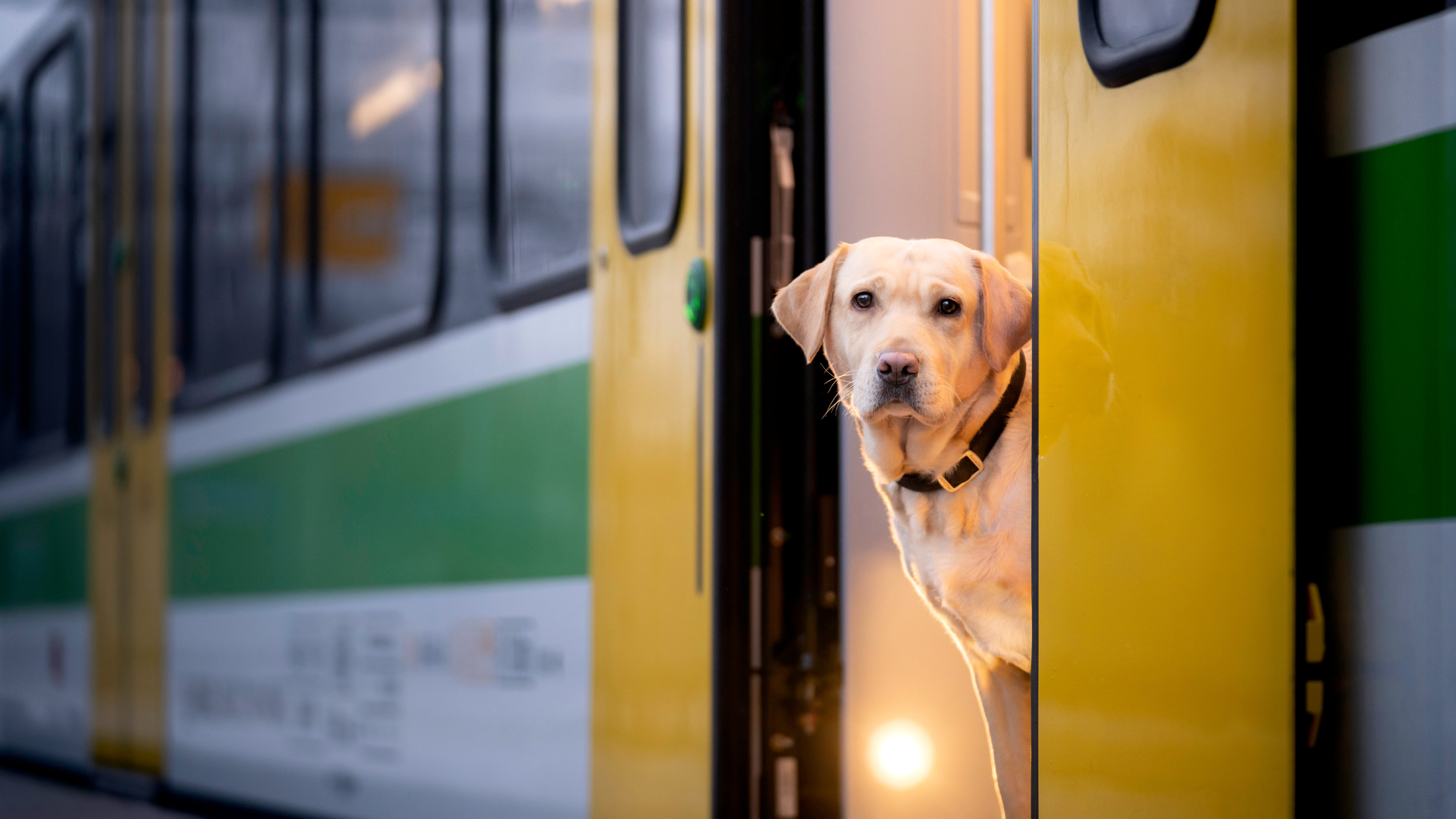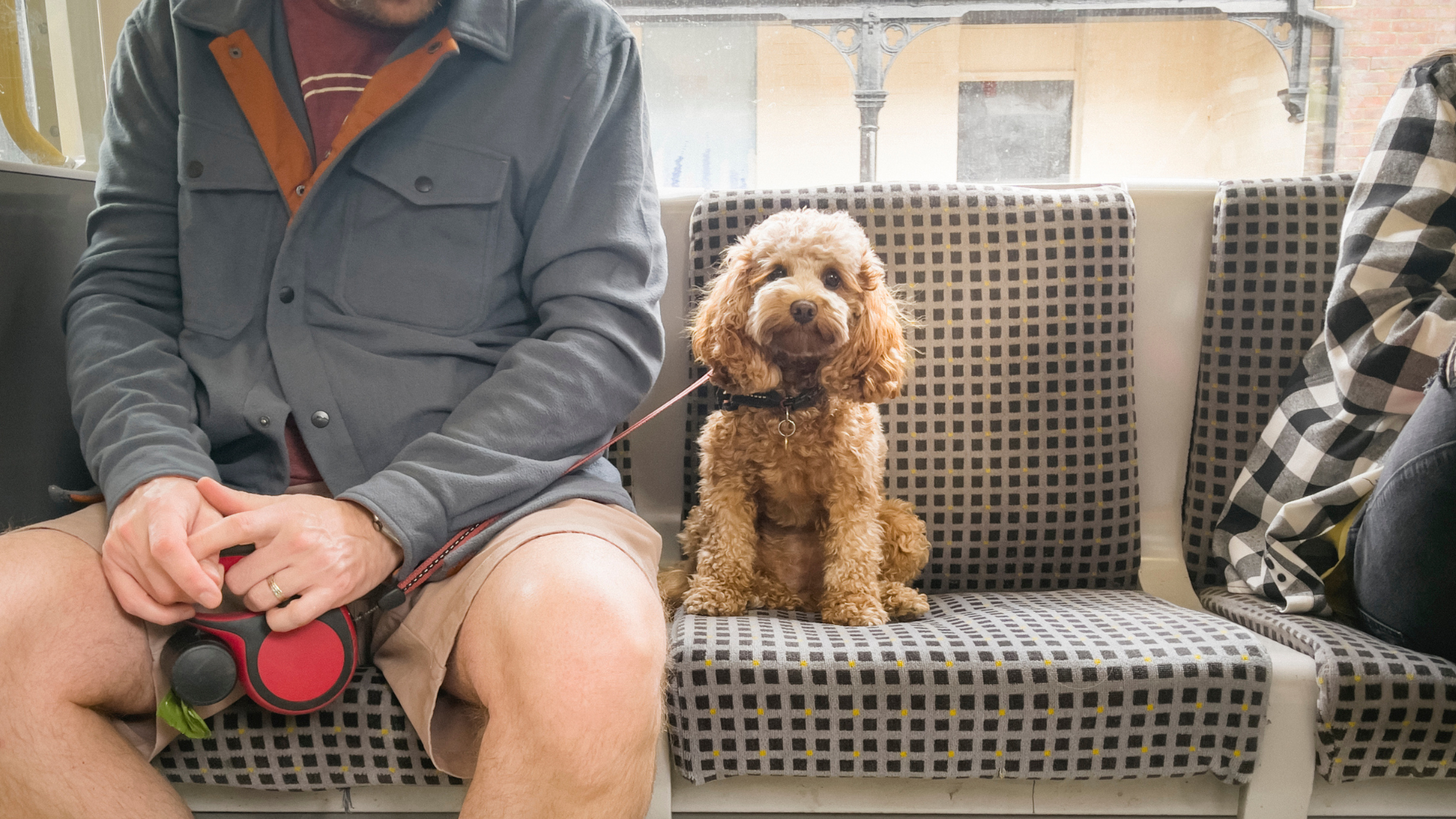
Can dogs travel on trains? As a certified canine behaviorist, I'm here to guide you through the ins and outs of taking your dog on a rail adventure. It's important to understand the rules and best practices for ensuring a smooth and enjoyable train experience for both you and your dog.
We'll delve into any restrictions that might apply, essentials you’ll want to pack - perhaps including the best pet tracker - and behavioral tips to help your dog enjoy the journey as much as you. If your dog hasn’t ever traveled by train before, it could be a stressful experience for them, so preparation is key.
Traveling by train with your dog can be a rewarding experience, offering a chance to bond and explore new destinations together without the stress of traffic or route following that car travel brings. With the right knowledge and preparation, you can help to make your rail journey stress-free.
Can dogs travel on trains?
When you’re considering how to travel with a dog you might have been questioning whether or not you can travel by train with them. While dogs can travel on trains, the policies and restrictions vary depending on the rail service provider you’re using.
For example, Amtrak in the USA, allows “dogs and cats up to 20 pounds (combined weight of pet and carrier) on trips up to seven hours on most routes”. Service animals are usually allowed on all trains without restrictions.
If your train line does allow dogs, it’s important to check with whoever you’re traveling with to see if there are any restrictions in place. For example, your dog may need to remain in the best dog crate or they may only be allowed in certain designated areas of the train. You may need to pay a fee for your dog to travel with you - but even if this isn’t applicable, make sure you’ve checked to see if your pet needs their own reservation when booking.
It’s important to check the specific guidelines of the rail service you plan to use prior to any travel.
How to prepare for taking your dog on a train
Preparation is key when it comes to enjoying stress-free adventures with your dog. Once you’ve checked the appropriate policies with your rail travel provider, it’s now time to get your dog ready for the journey.
1. Invest in a safe pet carrier
Pet carriers can be a useful tool to safely move your dog on and off the train (and sometimes they're required). They also give your dog a safe space to retreat to, should they feel a little overwhelmed. Choosing from the best dog travel crates might feel overwhelming, so it’s important to have a clear list of what you’d like - for example: what size it needs to be to fit your dog; whether you need it to be collapsible for storage; how heavy the crate is; what safety rating it might have; and how well-ventilated it is.
2. Familiarize your dog with the carrier
If your dog has never traveled in a carrier before, don’t leave it until the time of travel to try and put them in one. Give them many weeks to get used to the carrier - first by just placing treats or their favorite toy inside and letting them make the choice to enter. Then slowly building up time they’re comfortable inside, before trying to carry them in it. Seek out the assistance of an experienced and ethical pet trainer if your dog seems stressed.
3. Pack a travel kit
Include water, the best dog food, travel bowls, a first aid kit and some items from home to bring comfort - such as a favorite blanket or toy. A spare leash, plenty of poo bags, and some basic cleaning supplies can also be useful.
4. Important information
Make sure your dog has their ID tag and, if required, a license tag displayed at all times. Pack a list of their important information, such as insurance details, microchip number, and health certificate if required by the train service.

5. Research the route
Speak to the train company in advance to find out if there will be any appropriate stops on the journey for your dog to be able to alleviate themselves.
6. Before your journey
Make sure your dog has had a nice, calm walk filled with lots of sniffing to relax them before boarding the train. Ensure they’ve had plenty of opportunity to toilet and arrive at the station with plenty of time to prepare for boarding. Remember dogs pick up on human stress levels so try to remain calm and relaxed at all times.
7. Plan for your destination
While the train ride itself might seem like a big part of your adventure, if you’re planning on extending your journey by staying locally when you arrive - make sure you’ve booked dog-friendly accommodation. Avoid rushing into too many exciting activities upon arrival, as your dog may be tired from the stimulation of traveling by train.
Dos and don’ts of traveling with a dog on a train
Dos
- Check the specific pet policies of the train company you're traveling with in advance.
- Ensure your dog is feeling comfortable at all times. Check in on them regularly if they’re in a carrier, to make sure they aren’t stressed or needing water.
- Have correct ID tags on your dog at all times.
- Always keep your dog on a leash or in a carrier while on the train platform and in train stations.
- Plan for breaks during long journeys to let your dog relieve itself and stretch.
- Respect the comfort of other passengers.
- Pack dog waste bags and clean up any deposits promptly.
- Have fun!

Don'ts
- Don’t assume all train companies have the same pet policies; always verify before booking.
- Don’t leave your dog unattended in a train car or at a station.
- Don’t allow your dog to roam freely in the train or approach other passengers.
- Don’t let your dog off the leash.
- Don’t ignore stress signs your dog might display.
- Don’t leave introducing your pet carrier to your dog until the last minute. Plan in advance.
- Don’t punish your dog if they have any accidents in their carrier. Stress can cause your dog to toilet as a physical response.
- Don’t show any stress you’re feeling to your dog - take long, slow breaths and try to relax.
Has this article inspired you to go on an adventure with your dog? Check out our list of the best travel destinations for dogs. And if you’re looking for more support while preparing for your next trip - we’ve got 32 tips for traveling with pets.







